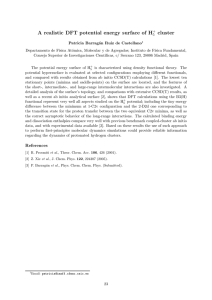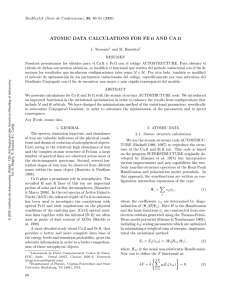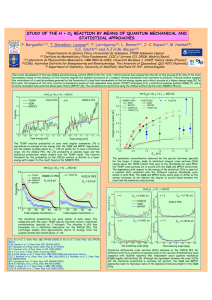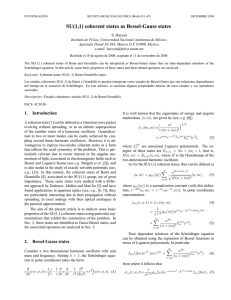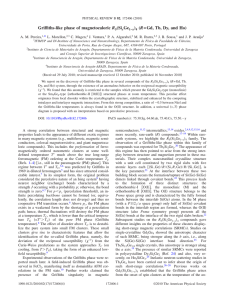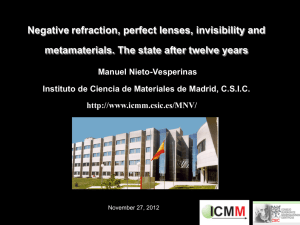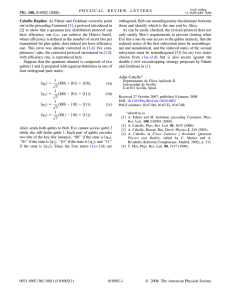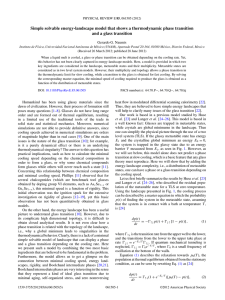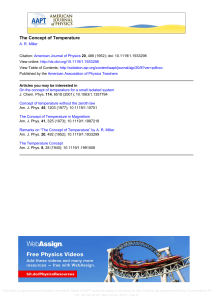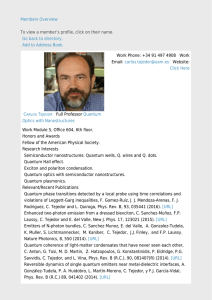The role of intramolecular scattering in K
Anuncio
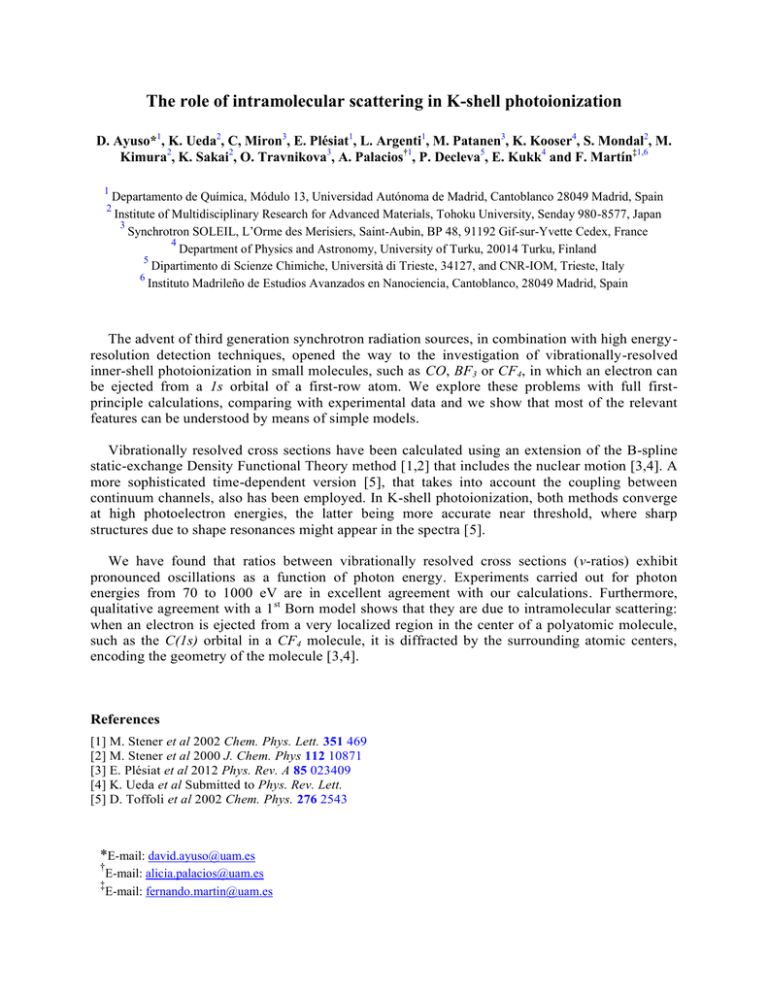
The role of intramolecular scattering in K-shell photoionization D. Ayuso*1, K. Ueda2, C, Miron3, E. Plésiat1, L. Argenti1, M. Patanen3, K. Kooser4, S. Mondal2, M. Kimura2, K. Sakai2, O. Travnikova3, A. Palacios†1, P. Decleva5, E. Kukk4 and F. Martín‡1,6 1 2 Departamento de Química, Módulo 13, Universidad Autónoma de Madrid, Cantoblanco 28049 Madrid, Spain Institute of Multidisciplinary Research for Advanced Materials, Tohoku University, Senday 980-8577, Japan 3 Synchrotron SOLEIL, L’Orme des Merisiers, Saint-Aubin, BP 48, 91192 Gif-sur-Yvette Cedex, France 4 Department of Physics and Astronomy, University of Turku, 20014 Turku, Finland 5 Dipartimento di Scienze Chimiche, Università di Trieste, 34127, and CNR-IOM, Trieste, Italy 6 Instituto Madrileño de Estudios Avanzados en Nanociencia, Cantoblanco, 28049 Madrid, Spain The advent of third generation synchrotron radiation sources, in combination with high energyresolution detection techniques, opened the way to the investigation of vibrationally-resolved inner-shell photoionization in small molecules, such as CO, BF3 or CF4, in which an electron can be ejected from a 1s orbital of a first-row atom. We explore these problems with full firstprinciple calculations, comparing with experimental data and we show that most of the relevant features can be understood by means of simple models. Vibrationally resolved cross sections have been calculated using an extension of the B-spline static-exchange Density Functional Theory method [1,2] that includes the nuclear motion [3,4]. A more sophisticated time-dependent version [5], that takes into account the coupling between continuum channels, also has been employed. In K-shell photoionization, both methods converge at high photoelectron energies, the latter being more accurate near threshold, where sharp structures due to shape resonances might appear in the spectra [5]. We have found that ratios between vibrationally resolved cross sections (v-ratios) exhibit pronounced oscillations as a function of photon energy. Experiments carried out for photon energies from 70 to 1000 eV are in excellent agreement with our calculations. Furthermore, qualitative agreement with a 1 st Born model shows that they are due to intramolecular scattering: when an electron is ejected from a very localized region in the center of a polyatomic molecule, such as the C(1s) orbital in a CF4 molecule, it is diffracted by the surrounding atomic centers, encoding the geometry of the molecule [3,4]. References [1] M. Stener et al 2002 Chem. Phys. Lett. 351 469 [2] M. Stener et al 2000 J. Chem. Phys 112 10871 [3] E. Plésiat et al 2012 Phys. Rev. A 85 023409 [4] K. Ueda et al Submitted to Phys. Rev. Lett. [5] D. Toffoli et al 2002 Chem. Phys. 276 2543 *E-mail: [email protected] † ‡ E-mail: [email protected] E-mail: [email protected]
